Our “Post-COVID” World: Returning to the Office
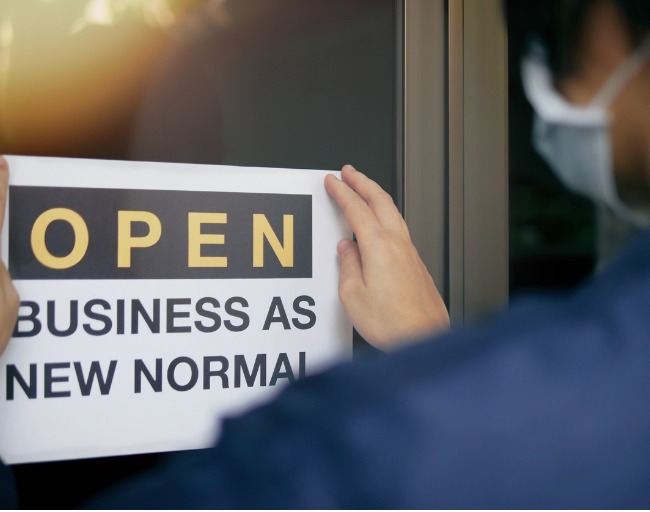
In March 2020, the business world went virtual. Offices closed, desks emptied, and the break room went silent. Now, more than a year later, your business might have already brought employees back to the office or have plans to do so soon.
As your employees come back, it’s important to remember one thing: COVID isn’t necessarily over. That’s why “Post-COVID” is in quotation marks in the title of this article. Yes, case numbers, hospitalizations, and deaths have declined dramatically since the start of the vaccination effort. That’s what is allowing companies to reopen their offices.
But COVID is not completely over, nor is it going away entirely. This fall, you may need to deal with a surge in cases driven by a variant. Or your operations may be affected by the need for a booster vaccine. As your employees return to in-person work, here are a couple things to keep an eye on.
Recommendations For Your Business: It Depends On The Details
Your employees’ degree of comfort, and the specific health recommendations we can make, will vary by business. In general, the more people – especially indoors – the greater the risk. The fewer people vaccinated or unknown, the greater the risk. The more vulnerable the potential recipient, the higher the risk.
In Virginia, we have been lucky to enjoy relatively low active COVID levels combined with relatively high vaccination (at least through July 2021 when this was written). Of course, that may change as variants emerge and we head into the fall, when we reasonably expect the prevalence of respiratory illnesses, like COVID or influenza, to increase.
Keep an eye on case numbers and the percentage of those being tested in your area. As they increase, the risk to your employees increases and your business should, at the very least, be prepared to make adjustments once again.
Mental Health: The Stress Remains
We are returning to our new normal, but that doesn’t mean the lasting effects of COVID have dissipated. The past 18 months or so have been hard for a lot of people.
Many have suffered losses of loved ones. Many have had enormous challenges in balancing professional and family responsibilities. And as your employees return to the office, they will face more stress related to kids and other family members, especially as children return to school in the fall.
Managing your employees’ everyday stress will be one of your primary challenges. A few months ago, 84% of adults reported feeling at least one emotion associated with prolonged stress (anxiety, sadness, anger, etc.). Many people aren’t sleeping well – 40% of adults have reported having trouble sleeping during the pandemic.
It’s likely you will see signs of stress among your employees in the office. What’s the best thing you can do for them? Recognize that we have all been through some tough stuff, and that our experiences have been and will continue to be individual. When possible, individualized solutions and approaches are ideal.
Employee Health: What To Focus On
As your employees return to the office, you may be wondering: what can we do to encourage health and wellness among our workforce? In many ways, this hasn’t changed since the start of the pandemic.
First, encourage your unvaccinated employees to get vaccinated. The vaccines are the safest and most effective way to protect both yourself and others.
Overall, emphasize the importance of eating healthier, exercising regularly, and sleeping better. All three help improve our immune systems – the first line of defense against any illness, COVID or not.
Also, remind them to schedule any preventive care appointments (colonoscopies, mammograms, annual physicals, etc.) they may have put off due to the pandemic. The National Cancer Institute projected missed screenings and other COVID-impacts could results in 10,000 additional deaths from breast and colon cancer of the next 10 years. We all need to get caught up on preventive healthcare appointments quickly.
For in-office safety protocols, the balance of managing vaccinated vs. unvaccinated employees is a challenge. In general, unvaccinated employees should continue to wear a mask, especially when around other unvaccinated people. Social distancing and regular hand washing continue to be easy ways to reduce risk.
And for managing the after-effects of COVID, be flexible. Hybrid-work schedules, flexible time, and a focus on results rather than process may help.

About the Author
Janet Kiss is a Membership and Corporate Sales Associate at PartnerMD and is available for one-on-one and/or roundtable conversations for VA Council of CEO Members.
Editors Note: PartnerMD is a Sponsor of Virginia Council of CEOs.
3 Critical Assets Needed for Strategic Readiness in Business

As we reflect on the past 17 months, resilience in our organizations has become a critical factor in moving forward. The ability to be resilient and return to a more recognizable business state, relies heavily on a solid foundation in your small business. The disruption we’ve experienced has been challenging but presents you with opportunity to:
- Revisit the foundation,
- Test resilience, and
- Assess and measure your organization’s strategic readiness.
With the Tokyo Olympics fresh in our minds, we challenge you to think of strategic readiness like an Olympic Triathlon. In the Triathlon, there are three vital components where efforts need to be focused – swimming, biking, and running. Athletes need to be strong and efficient in each of these three areas to realize their goal, and they must capitalize on assets such as endurance, strength, and mental toughness. Similarly, organizations have critical intangible assets that require focus and alignment. These intangible assets fall into three categories – human capital, information capital, and corporate culture. Developing and balancing these three areas in your small business will create a strong organizational foundation and will be key to facing challenges going forward.
#1) Human Capital
Human Capital is often defined as the knowledge, skills and experiences of your employees in terms of their value or cost to your organization. Human Capital Readiness represents the depth and availability of your employees’ knowledge, skills and experience as it relates to your business strategy. An assessment of your Human Capital Readiness will bring to light the gaps that need to be addressed. Is your Human Capital aligned with your business strategy? Are you realizing the value? Do you have the right people in the right places? Have you identified the strategic job families crucial to drive success? Are you measuring the success of your workforce and if so, how?
#2) Information Capital
By determining IT efficiencies at the forefront, company functions can be aligned, creating a sustainable and reliable partnership. Automation is essential to all functions within an organization. Increasing cost-effectiveness in areas such as infrastructure and applications is crucial in supporting internal processes and strategic planning. The partnership between HR and IT not only compliments each function but adds value, process automation, and strategic alignment within the organization. This Forbes article demonstrates how HR and IT can build organizational strength by partnering to:
- Invest in updated technology
- Invest in updated software
- Acquire new talent
#3) Corporate Culture
Harnessing the value of your people sets the stage for a robust workforce, and efficient processes keep the trains running on time. However, without buy-in from key talent into these new and improved processes, the overall company infrastructure is less sound. Culture is a critical piece of the foundation necessary to build a strong company. Are your employees aligned with your company’s strategic goals? Do they understand and believe in your mission, vision, and values? Does your leadership have the skills to foster this corporate culture? Is there an understanding of the organization’s core competencies which define your business allowing you to stand out from your competitors? Is there a robust Employee Value Proposition (EVP) to drive talent, engagement, and retention?
Similar to competing in the Triathlon, the ability to achieve strategic readiness with intangible assets offers an intimidating challenge, as organizations will need the mental tenacity, energy, and elevated levels of knowledge management to make these three assets ready for strategic implementation.
Athletes often utilize a coach to provide the knowledge and experience to help them prepare for a big race. Likewise, organizations can enlist the expertise of a firm specializing in HR consulting or business advisory to assist. Taking time now to assess your organization’s strategic readiness and developing your intangible assets will help you realize your goals. Are you up for the challenge? We can help!- Experts@FahrenheitAdvisors.com.
About the Authors
Melody Donovan-Hopkins, Senior Consultant at Fahrenheit Advisors. As an operationally focused strategic senior human resources professional, Melody has over 17+ years of progressive experience in the information technology, healthcare data analytics, life sciences, and financial industries. She is a strategic human resources servant leader with business acumen managing the employee life cycle.
Katherine Zampolin, Senior Consultant at Fahrenheit Advisors. With over 25 years of experience, Katherine provides a broad range of experience in leadership development, coaching, corporate culture, and talent management. Through her authentic and practical approach, she partners with organizations to help them strengthen their culture, engage and develop their employees, and reach their goals. Katherine has facilitated a broad range of training programs across all levels, with topics ranging from leadership skills and organizational change to diversity and inclusion and teambuilding.
EDITOR’S NOTE: Content provided by Fahrenheit Advisors. Fahrenheit Advisors is a Sponsor of Virginia Council of CEOs.
3 Insights You Need To Know Before Starting A Diversity, Equity, and Inclusion Program

Taking the first steps toward a well thought out, well rounded DEI program can be difficult, confusing, and uncertain. Your best strategy is to follow the path of those who have gone before you. Below are three insights and opportunities other CEOs have identified as critical to the success of the program you are considering:
1) Have thick skin. Be willing to get uncomfortable. Listening isn’t enough. Take action!
2) Start somewhere. Don’t over-complicate and avoid taking action due to over-analysis.
3) Ask a lot of questions. Read a lot of resources.
Are you ready to start a diversity, equity, and inclusion program in your organization or improve the one you have in place? Don’t go it alone! Download our FREE report “How CEOs Are Addressing Diversity, Equity & Inclusion – Experiences, perspectives, and insights from 50+ local CEOs.”
Is the ‘Great Resignation’ an Opportunity for Virginia SMBs?
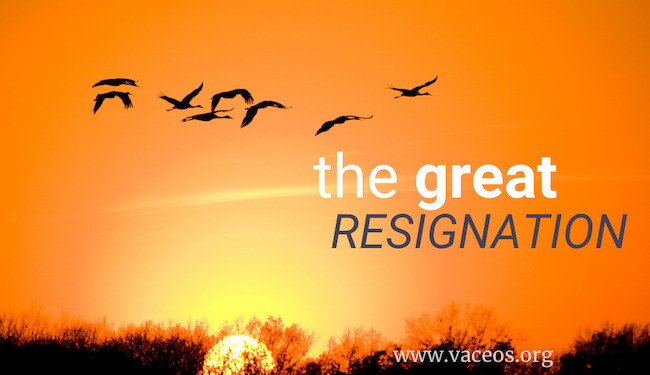
In April 2021, 4 million people across the U.S. quit their jobs. In May, another 3.6 million walked away.
Are these signs of a turnover apocalypse in progress in the Commonwealth? And if so, what can Virginia business leaders do to retain their employees and even secure new talent in a challenging environment?
A Matter of Perspective
Let’s face it, some scary forecasts have been tossed around lately. A frequently cited survey by Prudential Financial, for example, found that a staggering one in four workers plans to leave their current employment. Even more pessimistic, the Microsoft 2021 Work Trend Index estimates that 41% of employees worldwide may be moving on.
Leave the crystal ball behind, however, and the news is not as dire. Consider that over the long haul, about about 3.5 million Americans resign their positions in any given month. In April 2020, that number plunged to 1.9 million, indicating that some employees likely delayed a planned job search due to COVID-19 concerns.
As the calendar year changed over and pandemic fears began to ease, pent-up turnover broke out. But total quits, according to the most recent data available, are now running only a little higher than historical average.
Rewarding, Fulfilling, and Flexible
Was that the Great Resignation we’ve been hearing so much about? Is it over?
June employment numbers haven’t yet been posted, but regardless of whether Virginia SMBs can count on continued stabilization in voluntary turnover, local CEOs are eagerly checking in on their talent acquisition and retention strategies.
“The result of our national period of introspection—a workforce more focused than ever on finding employment opportunities that are rewarding, fulfilling, and flexible.”
Ask any experienced business owner and they’ll tell you that a regular talent review is an important best practice. The deep shifts in employee attitudes toward work right now, though, make such an appraisal especially urgent. Companies that adapt most effectively to today’s rapidly evolving employee perspectives can gain competitive advantage in a tight job market and capture the talent necessary to capitalize on a V-shaped economic recovery.
The best news, small and mid-sized businesses might be in the catbird’s seat here. Despite perceptions about enhanced unemployment benefits and heightened salary demands, workers themselves are telling a larger story about their career goals. Although pay scale certainly matters, countless employees have reexamined their employment priorities in light of COVID-19 and discovered what matters more than money.
The result of our national period of introspection—a workforce more focused than ever on finding employment opportunities that are rewarding, fulfilling, and flexible.
Good Questions
As any VACEOs Roundtable participant quickly realizes, good questions are often more valuable than great answers. So here are some talent-related queries you may want to pursue alone or with your peers in 2021, whether the Great Resignation comes for your industry or not.
#1 Mission
Some employees who took a step back in 2020 are now seeking a greater sense of purpose on the job. Take U.S. Marines veteran Jake Mancini, who was profiled in the Richmond Times-Dispatch in July. After leaving a career in manufacturing to become a software engineer, he’s earning less but finding his new position as a defense contractor, with a role to play in helping the troops, more fulfilling.
- How do I communicate my company’s mission and gain buy-in from workers?
- How can I help employees find a sense of purpose in their jobs?
#2 Opportunity
Mancini, mentioned above, was among the millions of Americans who used time spent unemployed to acquire new training and credentials. He’s proof positive that Virginia workers don’t just want more, they want to reach higher, too.
- How can I benefit from a pool of newly upskilled workers?
- How can I tap into the desire for training and advancement to re-inspire your workforce?
#3 Balance
From frontline retail, restaurant, and healthcare staff to Zoomed-out office workers, burnout is an enduring issue. What’s more, pandemic conditions led many employees to reassess the time they spend away from home. Some are now eschewing long commutes and late nights in the office in favor of remote and hybrid schedules and other family-friendly accommodations.
- How can I help employees regain equilibrium after 18 difficult months?
- How can I collaborate with employees to improve their work/life balance?
Conditions for SMB Success?
Small and mid-sized businesses frequently enjoy greater agility than their larger counterparts, a key advantage in a rapidly changing talent market. What’s more, smaller companies can be particularly effective at engaging employees and valuing each member of the team as an individual. Given what workers say they want in post-pandemic employment, Virginia’s SMBs may, therefore, find that other companies’ talent losses over the coming months become their gains.
Do you agree?
Bringing Back An Iconic Brand: The Stuckey’s Story
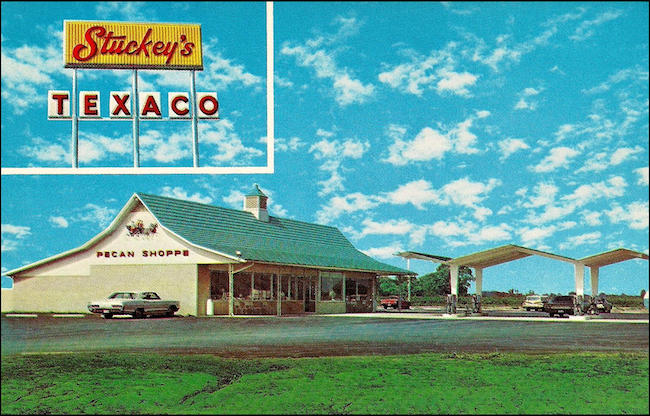
Stuckey’s is one of those iconic brands of the 60s and 70s that’s hard to forget. Peaking during a time when taking a road trip in your woody station wagon was the rage and the thought of a night’s stay at the Howard Johnson’s or Holiday Inn made you giggle with glee, brands like these became classics many of us came to know and love.
The Stuckey’s roadside stop and its famous pecan log rolls began to lose their luster in the 80s but have now seen a resurgence, thanks to the founding father’s granddaughter, Stephanie Stuckey. But why, in 2019, would this environmental lawyer by trade take on the family business in its last hour of life?
“I think what really drove me more than anything is that I knew my grandfather and I knew his vision for Stuckey’s and it just broke my heart to see how the company had floundered. Nobody either had the capacity, the capital, the wherewithal. Nobody wanted it,” she reveals during her presentation to a VA Council of CEOs audience.
Six months after buying a sizable sample of shares, the business turned a profit under her guidance. For Stephanie there was no turning back. Fueled by her love of the brand, she bought her father out. Today she is honoring what is sacred in the business but is determined to shake off what is not working.
Here is how this passionate and determined CEO is bringing back this iconic brand.
But first, a trip back in time.
Uniquely Stuckey’s
The history of the iconic Stuckey’s brand began during the Great Depression, when W.S. Stuckey, Sr. had to drop out of law school to work the family farm. Desiring a better life, he had a side hustle selling pecans on the side of the road. There he recognized a need.
“He saw very quickly that the problem was, especially in that time, people were traveling the roads and didn’t have reliable places to pull over and get gas and have a cold drink of water. We really were the very first roadside retail chain,” says Stephanie. At its peak in the early seventies, Stuckey’s claimed 370 stores in over 40 States, every major interstate highway system, except Pacific Northwest.
Stuckey’s was the place to “Eat Here and Get Gas” as its famous tee shirt expressed. The chain featured Stuckey’s candy products and quirky merchandise, including games for the car, small toys, and various other sundries to make the road trip convertible and memorable.
“I think a lot of it was the experience we were unlike any other roadside stop,” says Stephanie. “At one point we had talking Mynah birds in the store. We had quite a few stores that had their own honeybee hives and made honey on site.”
Stephanie reports that franchisees were almost always a husband and wife team who often lived in the back of the store. Often the wife made special recipes to supplement the standard menu. This gave each Stuckey’s a similar but uniquely local feel.
“My grandfather believed in having a unique, curated experience. So you would go to a Stuckey’s on Stuckey’s in Florida you would get fresh citrus fruits out front and there would alligator souvenirs. You would have things that were special to that area. We had a candy plant, a trucking company, a sign company. Things were going gangbusters and then he sold the business to Pet Inc.,” reports Stephanie.
“They were just going to buy Stuckey’s trademark and make a bunch of cheap, ugly chotchkies —souvenirs probably — and sell them on Amazon for cut-rate prices and cheapen the brand even further. And I was like, this is not the Stuckey’s. This is not how we finish.”
Stephanie stuckey
Fast forward, corporate merger after corporate merger, the brand became a subsidiary of a large corporation. The family became disengaged and the brand began to disappear. Hundreds of stores were lost.
Stephanie’s father bought the company in 1985, but the store-in-store concept further diluted the brand. Financially the business was losing money. Occupied by other projects like his father before him, he was ready to sell the company and trademark.
The final chapter of the brand was looking grim. If Stephanie didn’t step in, outside investors would. “They were just going to buy the Stuckey’s trademark and make a bunch of cheap, ugly chotchkies —souvenirs probably — and sell them on Amazon for cut-rate prices and cheapen the brand even further. And I was like, this is not the Stuckey’s. This is not how we finish,” says Stephanie.
The Brand Rebounds by Focusing on Visual Rebranding, Its Sacred Cow, Manufacturing, and Retail Sales
Stephanie immersed herself in the history of the company and religiously studied other nostalgic and new brands like Howard Johnson’s, Chick-fil-A, and Nike. She learned what makes a great CEO. “There’s no magic formula for what makes a great CEO. They have all these different characteristics and personality types and skills, but the ones that are really successful share one thing, and that is they surround themselves with people who fill in their gaps,” she reports.
Simply stated, Stuckey’s started to get back to its roots. “We’re focusing on what we started as, which was a pecan stand on the side of the road,” says Stephanie.
The game plan is relatively simple:
- Shake off the bad
- Keep the sacred cow
- Build growth with manufacturing and retail sales outlets
- Dream big
Shaking Off the Bad
“Bad (packaging and logo) design is what I’m shaking off,” reports Stephanie. “So I invested in storytelling and I invested in beautiful design.” She reveals that she takes inspiration from other nostalgic brands like Moon Pie and Little Debbie Snack Cakes. “They all have their classic line, but then they have fun with it,” she says.
The logo has had a facelift and she plans to also make use of original artwork from the Stuckey archives. “I am spending very strategic dollars on what I think is the most important aspect of branding, which is designing. I really feel strongly about the look of the brand.”
Keeping the Sacred
Stephanie believes in the company’s “sacred cow”, which is its pecan log roll, described as “Uniquely sweet and scrumptious, with a light, fluffy nougat center mixed with maraschino cherries which are hand-dipped in an antique copper kettle holding fresh-made buttery caramel.” But like the packaging, the log rolls have been updated. They are larger and lack the high fructose corn syrup and artificial ingredients of the original.
And because she recently purchased a factory in the heart of pecan country, Stuckey’s is literally tree to table.
Building Product and Sales Growth
Manufacturing the candies in-house and focusing on retail sales are what’s driving Stuckey’s current growth. “I want to see us making more of our product. What I think what the pandemic taught us is that we have all these supply chain breakages and the closer you can get to making your own stuff and having a connection with what you’re making,” she reports.
“We bought a manufacturing facility that shells pecans to make pecan candies. So that is the key driver of our growth is that we are selling our product to more retail channels. And we’re not just selling to Stuckey’s. We have some 250 plus, and it’s growing every day. We’re about to pick up a new chain of 250 new stores,” she reports.
The website is revamped website, making it easy for people to go online and buy the products. Stephanie reports the merchandise is very popular. “The Get Gas shirt we made in the seventies. I brought it back. People love it! We have sold out and we are ordering more. And we’ve got coonskin caps, dunking birds, rubber alligators, and all the sort of kitschy fun merchandise that you might remember pulling over and seeing as a kid. And so we’re bringing all that back and along with the fun of taking a road trip.”
Big Dreams
What is next for the brand? Stephanie explains that she is not fighting to win over Gen Zs or Millennials, but rather plans to lean into nostalgia.
“I like to say we are a small brand with big, big aspirations. I want to be the embodiment of the road trip. That’s my big dream. That is our big audacious goal. It’s when you think ‘road trip,’ you think Stuckey’s. And I want us to own our own stores and I want to be able to build the awareness of the road trip and a community of people who love to take to the open road.”
It’s not 5,000 stores or a thousand stores she hopes to build, but only a dozen or so, framed as Stuckey’s Roadside Oasis complete with souvenirs, photo booths, vending and amusement machines, and amazing local food.
In the works now, a Stuckey’s RV retro decorating line, complete with curtains and kitchie towels. No doubt this will tempt a new generation of road trippers!
We have no doubt that Stephanie’s passion for the brand will keep this piece of nostalgia alive and well.
Source for story: VA Council of CEOs event: “THE STUCKEY’S STORY: BRAND BUILDING, PECANS, AND THE GREAT AMERICAN ROAD TRIP”, May 13, 2021, 12:30 – 1:30 PM EST

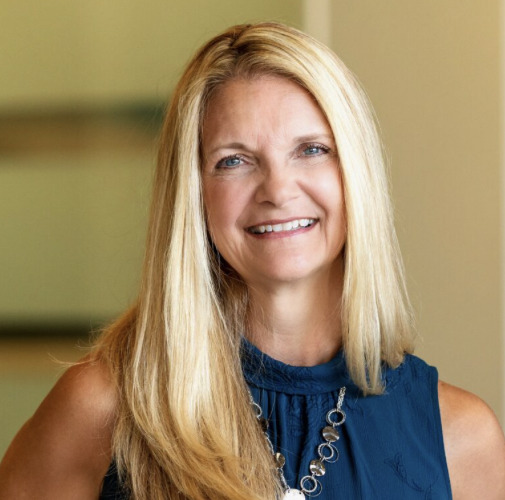
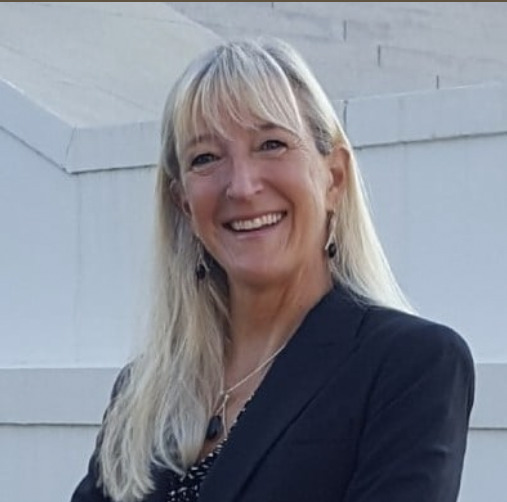
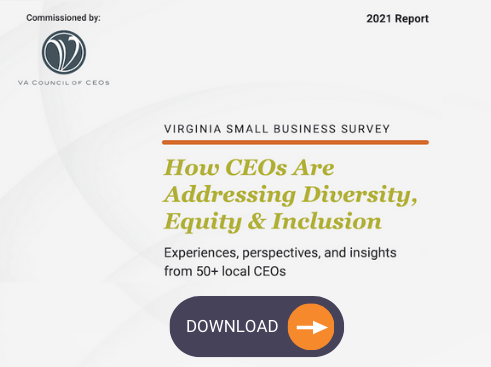
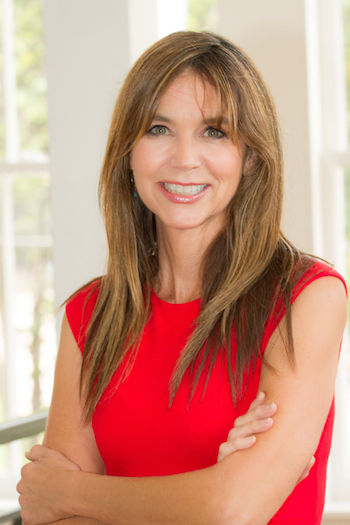

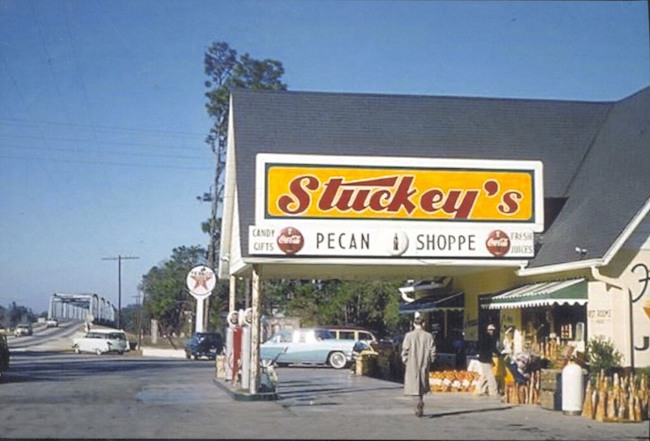
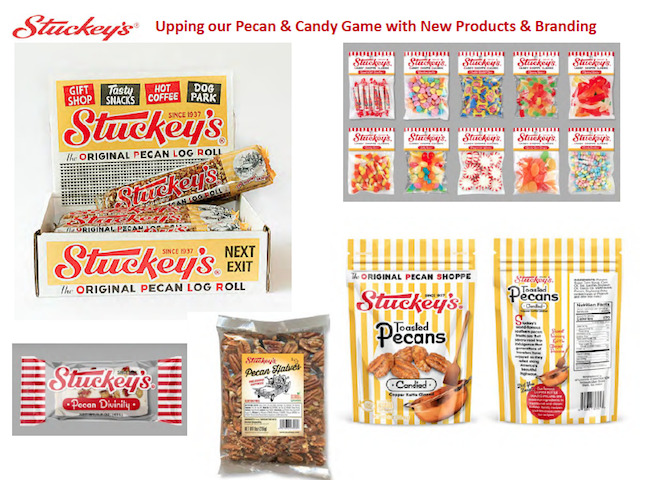
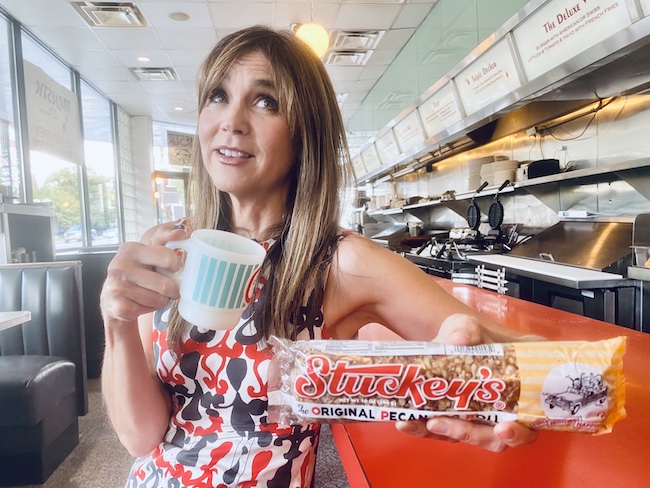
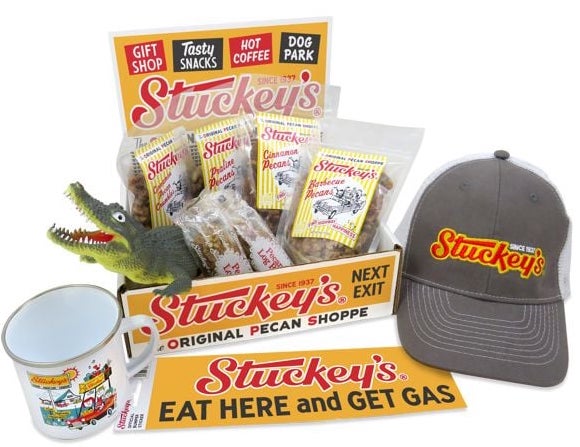
Recent Comments